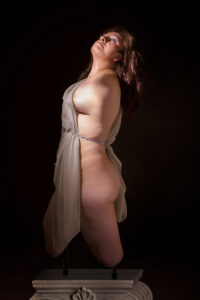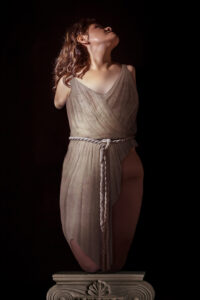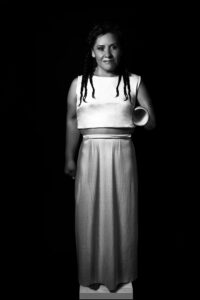Taking classical Greek sculpture as a reference, I developed a series of photographs that was related to my practice as an orthopedic traumatologist by previously performing various amputations on people who had suffered some type of accident or due to some disease in which to save their life, it was necessary to do without any of its limbs. One of the events that marked me the most was the accident of a teacher’s bus in which many had lost their upper limbs. At that time, due to the professionalism that must be exercised in these cases, I was able to keep my composure until later I reflected on the body and its fragility all this from the view of my photographic production. Within this parameter, my relationship with amputations has to do with the phenomenon of incompleteness. Thinking about the organism-body in terms of the fatality or suffering of the person who has abruptly suffered something so traumatic. And to think that when someone wakes up they see themselves without any of their limbs. But, is it really “incomplete” or is it just a fact that, although terrible, it is still socially or culturally constructed? In that sense, The Greek or Roman thought viewed bodies with deformations or incompleteness, as individuals who could not serve or fulfill as citizens and that was why it was necessary to marginalize them and let them die. Christianity does not make great progress because within its apparent notion of love and inclusion it repeats all the prejudice. In the era of reason and modernity, it is repeated, as in Rome, the fact of excluding for the body is a mechanism of capitalist production, if it does not work it socially disintegrates.
From my perspective, this series is built of those reflections and also from my own fears, such as ¨the being and the body ¨. Thinking of myself in said situation, a fixation that may have to do with other senses of incompleteness, the absence beyond an arm or a leg makes me shiver. Thus, in the historical sense, I find many references, such as the one that I now present, and it is the amputation suffered by the sculptures as historical vestiges or residues. The Venus that was supposedly “complete”, the fragmented frieze reliefs in the British museum. Without knowing if they were found that way, or were they really the product of destruction caused by looting or wars? The sculptures are related to the amputees not only in form but also in characteristics of the historical circumstances of their materiality. So I find a strong connection with these ideas that lead to the fragmentary, the interference of destiny and the historical transcription of the remains as well as the inscription of nature that affects the bodies.
In this series of pictures, I build myself as a model to channel my catharsis, with a certain irony, with a certain play of absurdity and theatricality, a bit like Marcos López, David la Chapelle or in some way, Peter Witkin. The image can play in several ways, but it can also sublimate and heal.




